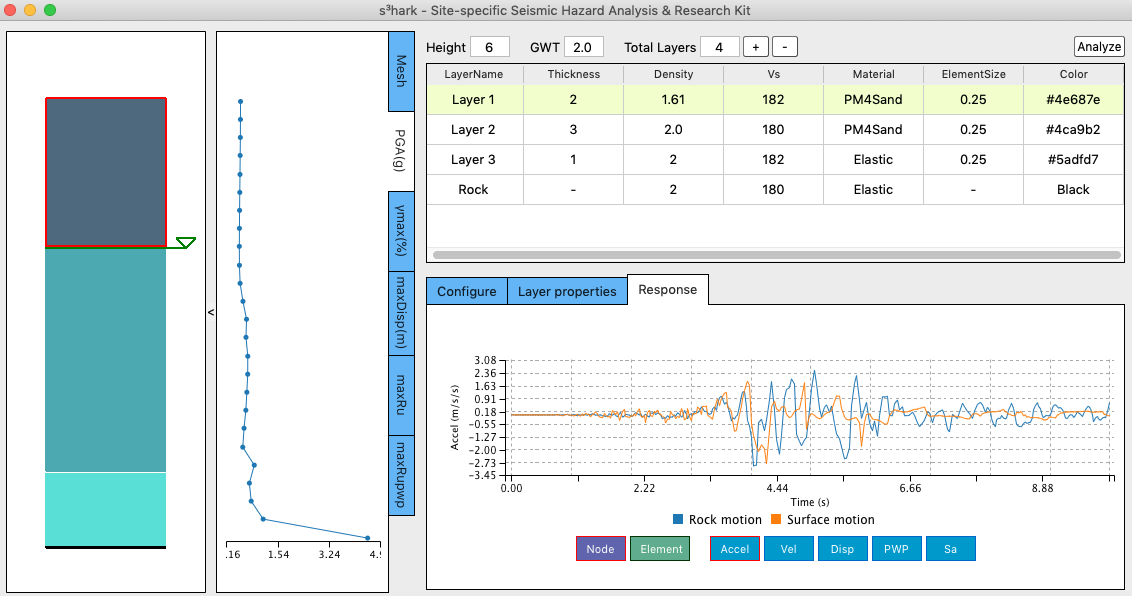QS3hark reads as Q-shark, which is a site-specific seismic hazard analysis and research kit with uncertainties quantified. This tool focuses on simulating wave propagation along soil depth using finite element (FE) method. The intended audience for QS3hark is researchers and practitioners interested in performing site-specific analysis of soil in response to earthquakes, and educators interested in teaching site response analysis in their classes. The tool provides a friendly interface for users to input and modify soil layers using tables, while the built soil profile and the FE mesh being visualized simultaneously. Results including acceleration, velocity, displacement, pore pressure, spectral acceleration, etc., are visualized for the soil profile and for each node as well, from which the user can comprehend the wave propagation and liquefaction status along the soil depth.
Features of QS3hark include:
- 2D and 3D elements for dynamic analysis of fluid saturated porous media
- Advanced linear / nonlinear soil material models
- Total stress / effective stress analysis
- Bi-directional motions
- Flat / slope free field analysis
- Finite rigidity of the bedrock
Available material models:
| Material models | Usage | Status |
|---|---|---|
| ElasticIsotropic | 2D/3D | ✓ |
| PM4Sand | 2D | ✓ |
| PM4Silt | 2D | ✓ |
| PressureIndependMultiYield | 2D/3D | ✓ |
| PressureDependMultiYield | 2D/3D | ✓ |
| PressureDependMultiYield02 | 2D/3D | ✓ |
| PressureDependMultiYield03 | 2D/3D | ✓ |
| ManzariDafalias | 2D/3D | ✓ |
| Borja-Amies | 3D | ✓ |
Charles Wang, Long Chen, Frank McKenna, Peter Mackenzie-Helnwein, Adam Zsarnoczay, Wael Elhaddad, Michael Gardner, & Pedro Arduino.
This material is based upon work supported by the 
National Science Foundation under Grant No. 1612843.
Long Chen and Andrew Makdisi at University of Washington, Gregor Vilhar at PLAXIS, BV contributed to the verification of PM4Sand model.
Charles Wang, NHERI SimCenter, UC Berkeley, c_w@berkeley.edu
